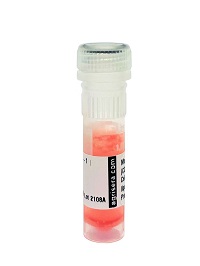1

Anti-Rhamnogalacturonan-Ia (clone CCRC-M2)
AS16 3134-1ml | Clonality: monoclonal | Host: Mouse | Reactivity: Acer pseudoplatanus, Arabidopsis thaliana, Cyamopsis tetragonoloba
From the laboratory of Michael G. Hahn, PhD, University of Georgia
- Product Info
-
Immunogen: MeBSA-conjugated sycamore rhamnogalacturonan-I (non-covalent), Sub class: IgM Host: Mouse Clonality: Monoclonal Purity: Cell culture supernatant. Format: Liquid Quantity: 1 ml Storage: Antibody can be stored up to 1 month at 4°C, and at -80°C for up to 1 year. Make aliquots to avoid repeated freeze-thaw cycles. Please remember to spin the tubes briefly prior to opening them to avoid any losses that might occur from material adhering to the cap or sides of the tube. Tested applications: ELISA (ELISA), Immunohistochemistry (IHC), Immunofluorescence (IF) Recommended dilution: Undiluted or at 1 : 10 (ELISA), (IF), (IHC) - Reactivity
-
Confirmed reactivity: Acer pseudoplatanus, Arabidopsis thaliana, Cyamopsis tetragonoloba Predicted reactivity: Rhamnogalacturonan-I from gum karaya, sycamore and Arabidopsis pectic polysaccharides Not reactive in: No confirmed exceptions from predicted reactivity are currently known - Additional Information
-
Additional information: Exact working dilution needs to be determined by end user - Background
-
Background: Rhamnogalacturonans (RGs) are pectic polysaccharides found in the cell wall, which contain a repeating dissacharides backbone: α-D-GalpA-(1,2)-α-L-Rhap-(1) - Product Citations
-
Selected references: Pattathil et al. (2012). Immunological approaches to plant cell wall and biomass characterization: Glycome Profiling. Methods Mol Biol. 2012;908:61-72.doi: 0.1007/978-1-61779-956-3_6.
Patathil et al. (2010). A comprehensive toolkit of plant cell wall glycan-directed monoclonal antibodies. Plant Physiol. 2010 Jun;153(2):514-25.doi: 10.1104/pp.109.151985. - Reviews:
-
This product doesn't have any reviews.
